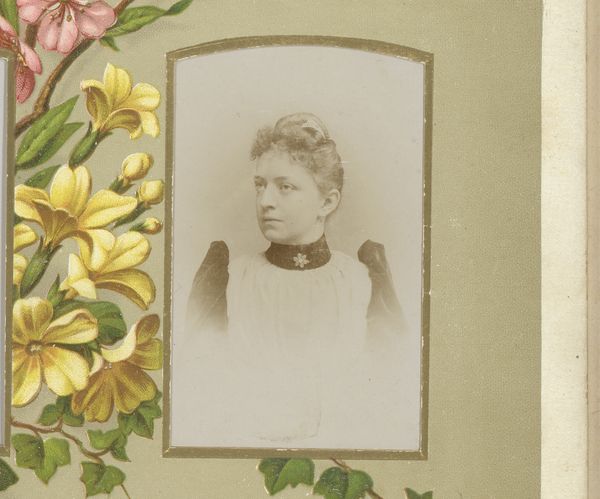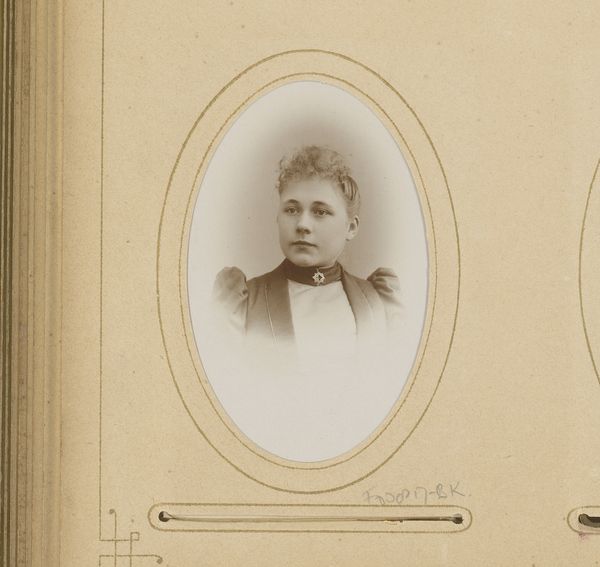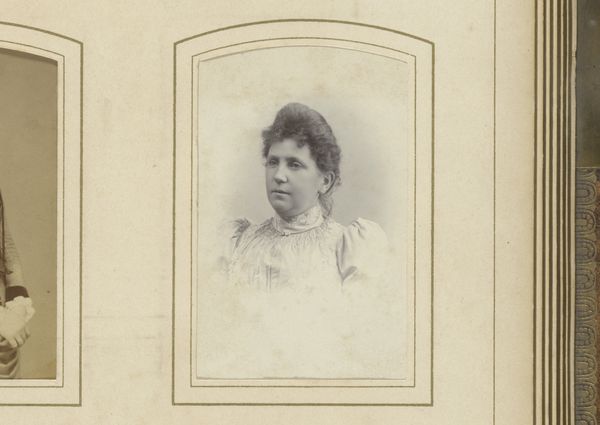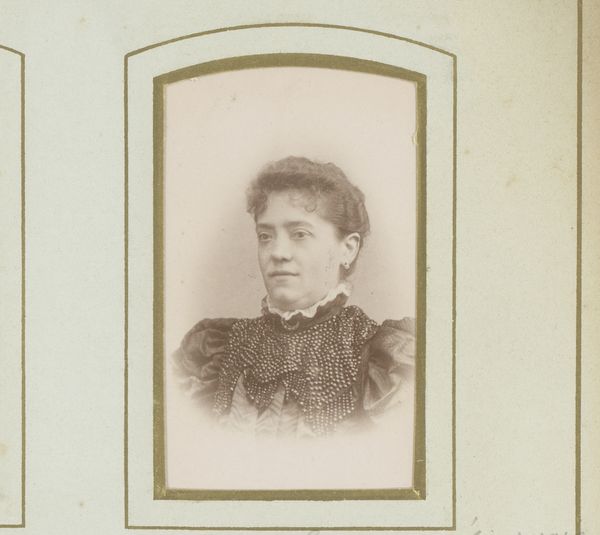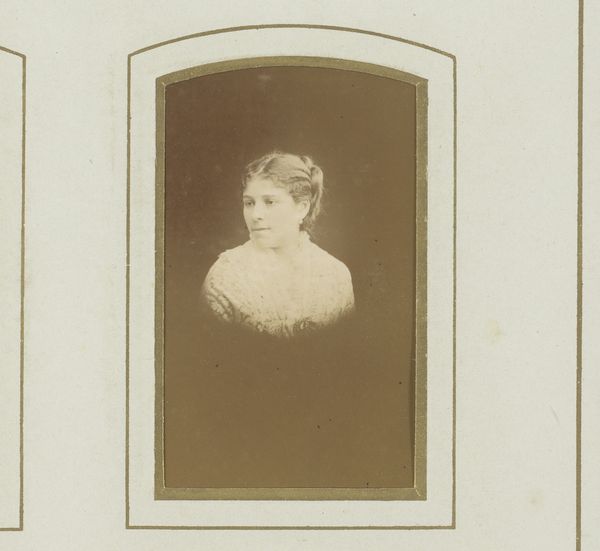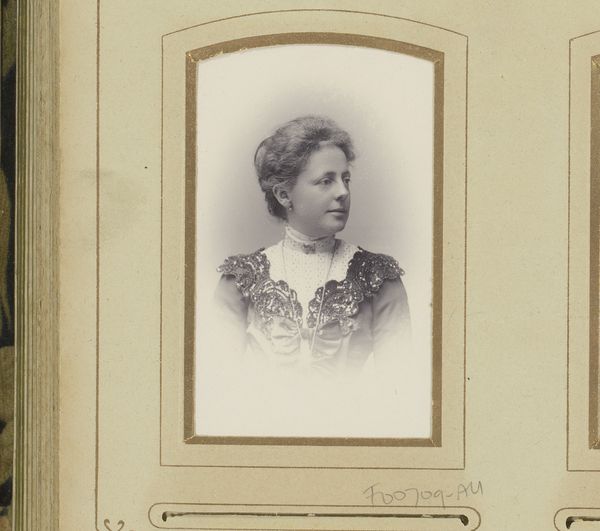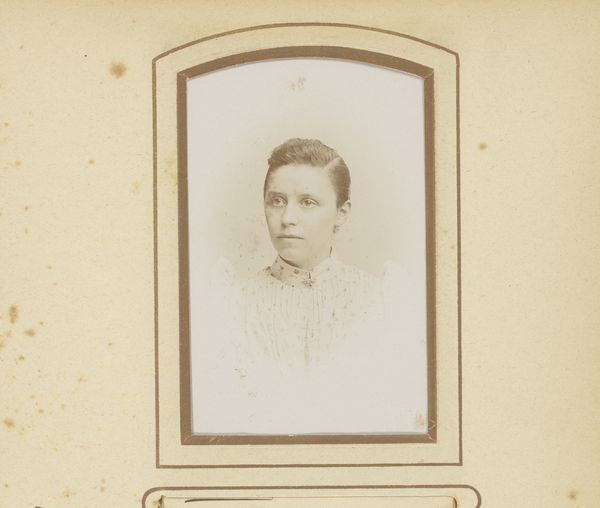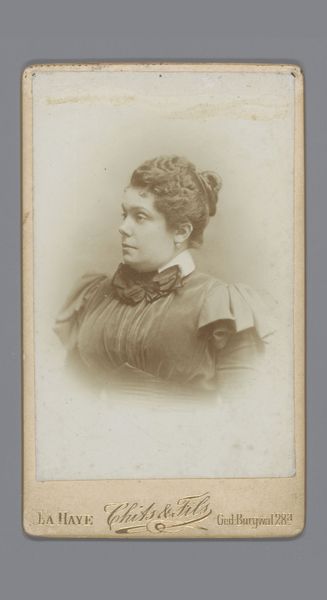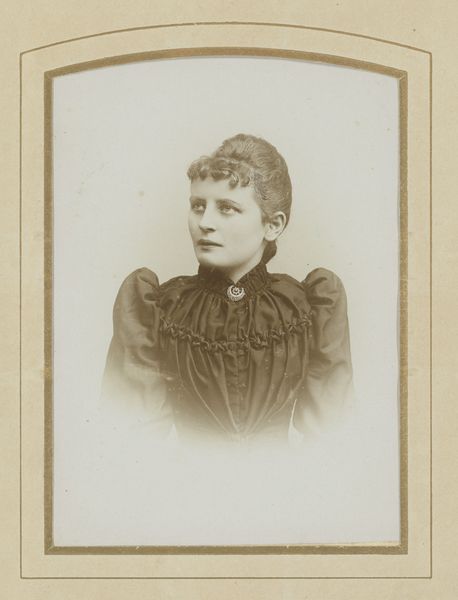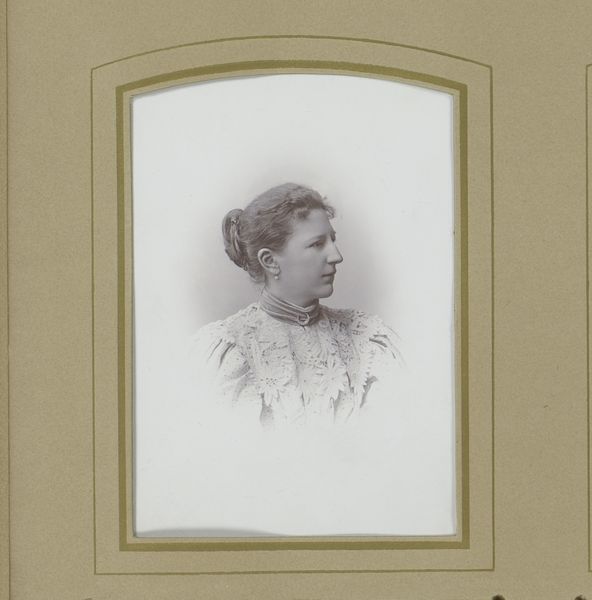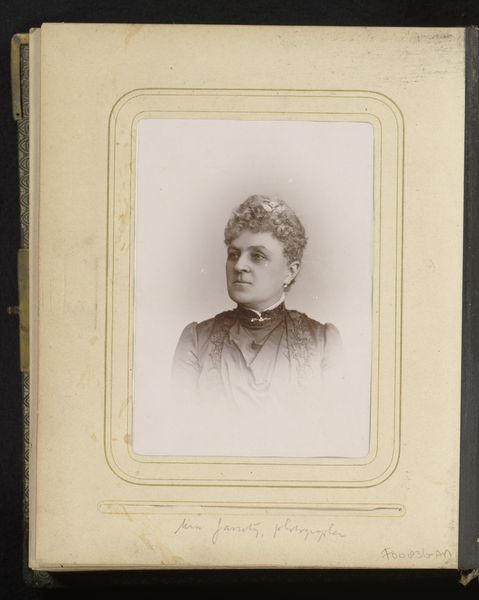
photography, gelatin-silver-print
#
portrait
#
pictorialism
#
photography
#
gelatin-silver-print
#
realism
Dimensions: height 165 mm, width 107 mm
Copyright: Rijks Museum: Open Domain
Curator: This photograph, titled "Portret van een jonge vrouw," which translates to "Portrait of a Young Woman," was created sometime between 1860 and 1900, credited to Baresel & Schubbert. It's a gelatin-silver print. Editor: The portrait has a delicate and melancholic mood. The soft focus and sepia tones impart a dreamlike quality, almost like peering into a faded memory. Curator: Pictorialism was gaining traction around this time, and you see that influence in the softness of the image. Photography was still establishing itself as an artistic medium, and techniques like soft focus helped photographers emulate painting. It lent the work legitimacy. Editor: Yes, the romantic style really softens what could be seen as an otherwise realist, even somewhat severe, image of a young woman on the cusp of adulthood. It makes me wonder about her interior world; does the image succeed in communicating it? Curator: It's interesting to consider the social role of photography at this time. Portraiture became more accessible, documenting not just the elite but a broader segment of society. Studios like Baresel & Schubbert democratized image-making, in a way. Editor: What stands out to me is the woman's gaze, averted yet still so present. Is it timidity, weariness, a hint of defiance, all bound in that enigmatic turn of her head? And it sits framed in something of gilded music sheets and floral embellishments. Curator: Certainly, portraiture in photography provides insight into the construction of identity in the late 19th century. From the choice of clothing to the pose, every detail communicates societal values and personal aspirations. This specific artwork highlights, especially for its time, this democratisation through art. Editor: A fascinating reminder of photography's role in both capturing and shaping our understanding of the past. Curator: Agreed. Its place as a social record, but also as art that both reflect the values and allows the subject a chance to reveal some piece of self, continues to impact us.
Comments
No comments
Be the first to comment and join the conversation on the ultimate creative platform.
